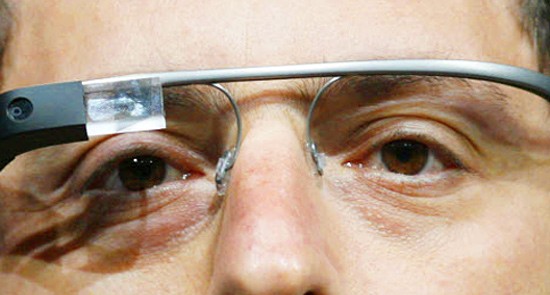
You hear them before you see them: running footsteps and blood-curdling cries of fear. You watch blurry first-person footage of a man walk down a high school corridor and turn the corner, past rows of lockers and doors to classrooms.
His eyes, your eyes, size up a bunch of kids bolting for the exit. A semi-automatic rifle sprayed from left to right showers their bodies with bullets. You watch more people die before the police finally arrive and corner him. He retrieves a pistol from his backpack, points it at the camera and shoots himself in the head.
It’s not an action movie or a video game. You watched it live via an online streaming service. It was real. It went viral. Millions saw it on their computers and mobile devices before TV news outlets around the world replayed clips of the macabre footage for years to come.
Welcome to the future of terror.
Last week’s Boston bomb saga saw millions glued to social media outlets, absorbing the story at warp speed. News on platforms such as Twitter and Reddit breaks quickly — far quicker than any single publication can keep up with. People who followed the saga, as Bernard Keane observed last week on The Drum, watched “traditional media dying before their eyes”.
Amateur sleuths amassed on Reddit, sharing photographs and compiling spreadsheets. Twitter feeds were flooded with links to maps, videos, blog posts, news stories, streaming radio broadcasts, audio clips, facts, speculation, hysteria and on-the-scene observations from reporters and the public. There were photographs tweeted of suspects, SWAT teams, blocked-off streets, helicopters, tanks and cheering crowds. It was voyeurism on steroids, Dog Day Afternoon for the digital age. And it felt like the whole world was watching.
Evidence suggests the perpetrators of last week’s devastating events did not want to be apprehended. Suspect Tamerlan Tsarnaev died in a shoot-out with police; his brother Dzhokhar, also a suspect, was found cowering in a yacht. Nobody came forward to claim the killings.
“The future of terror will be viral. It will be social. And whether you like it or not, you’ll be a spectator.”
The archetypal 21st century terrorist and mass shooter, however, wants notoriety. Osama bin Laden evaded capture for years but appeared in videos watched by millions. Aurora cinema gunman James Holmes dyed his hair red, rigged his apartment with explosives, went on a murderous rampage and waited in the car park afterwards for police to collect him. At the trial of Anders Breivik, the Norwegian mass murderer smiled, saluted and spoke proudly of acting to prevent the “Islamisation” of his country. School shooting perpetrator TJ Lane flipped the bird at relatives of his three victims and stunned the court by revealing a T-shirt with the word “killer” written on it.
These men don’t just want to watch the world burn, as Michael Caine put it in The Dark Knight Rises, the movie Holmes interrupted with real-life horror. They want everybody to know who lit the fire.
Social media has offered glimpses inside the mind of killers and criminals. “Most of you are conditioned by the media,” Dzhokhar Tsarnaev tweeted on April 10. But we are yet to see perpetrators of devastating crimes like those mentioned above use social media platforms to exhibit their nasty work in real-time. It will happen, just as live TV (though not from a first-person perspective) made a balcony in Munich famous in 1972 and captured the twin towers crumbling to dust in 2001. And when it does, the remaining shreds of social media’s innocence — lost around the time cyber bullying emerged and kids responded by self-harming and killing themselves — will be obliterated.
Imagine how fast information would circulate from a killer who live tweeted their own massacre. Then imagine if they never had to pause to upload a photo from their smart phone or compose a status update.
Augmented reality glasses like Google Glass are being touted as the next potential game-changer in mobile technology. The idea that somebody can film and broadcast from their eyeballs without so much as touching a camera is no longer science fiction. DIY-style videos have already surfaced; the technology will be on shelves next year. Popular mobile app Vine, which records short videos embedded on social networks such as Twitter and Facebook, provides another indication — and there have been several — that POV technology is here to stay.
If a mass murderer broadcasting their body count to a galaxy of internet users do so on a website hosted by countries with lax file-sharing legislation, such as Norway and Spain, authorities will have great difficulty shutting it down. Politicians will scurry to action, perhaps propose censorship measures similar to those enforced in China. New debates will begin about online freedom and the democratisation of the web.
The future of terror will be viral. It will be social. And whether you like it or not, you’ll be a spectator.








Quick visual summary for those who haven’t managed to keep up with social media:
http://imgur.com/a/Nx8EU
“Max Headroom” anyone?
Wow – interesting read and thought provoking article Luke which evoked this response:
Trojan Horse for the 21 c is viral
Home grown generational cell operatives assimilate within communities worldwide. They’re scientifically educated and work under the radar in research labs containing specimens capable of mass destruction…
Fiction becomes a reality.
The Boston bombers and 9/11 terrorists had the appearance of ‘local normality’
However I’d rather be a spectator in your version then a player in mine…
If I have a choice though it would be neither.
“The future of terror will be viral. It will be social.”
…and very VERY ANTI-social.